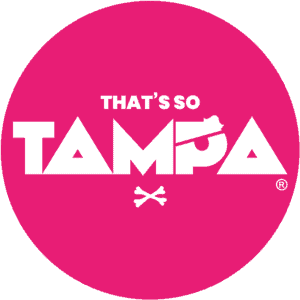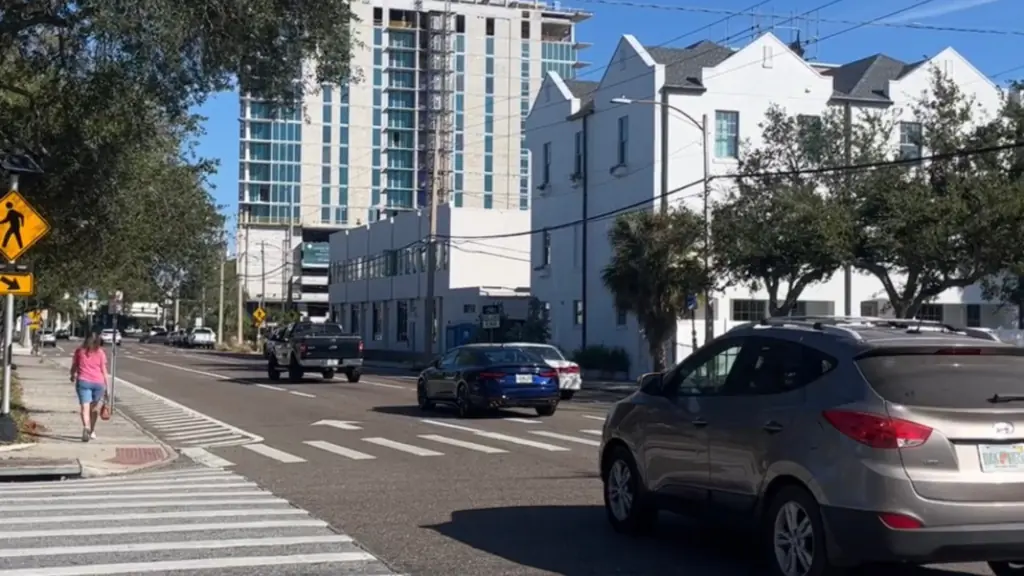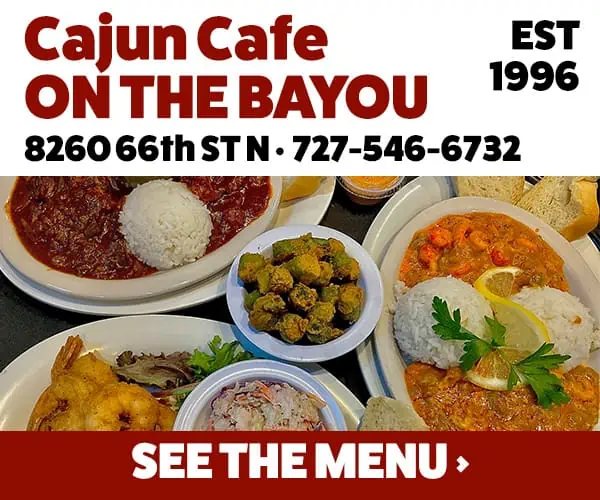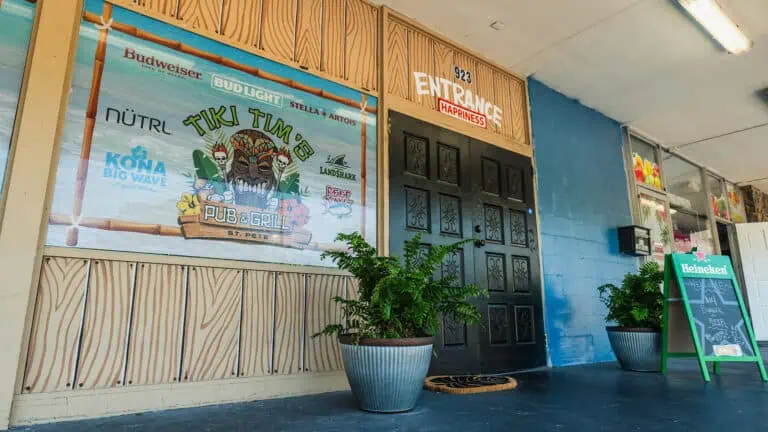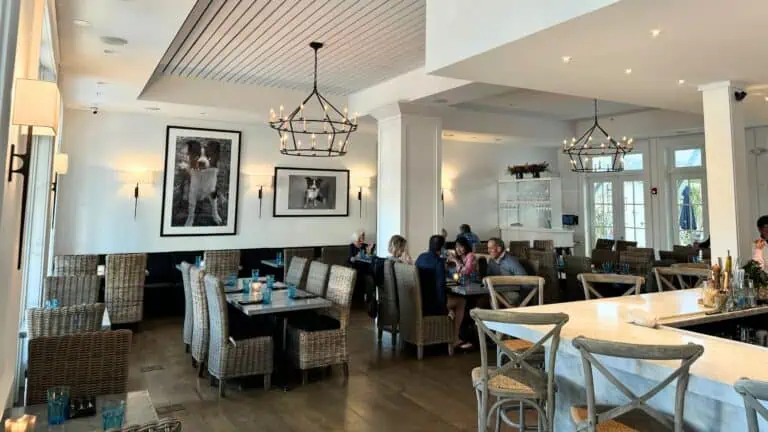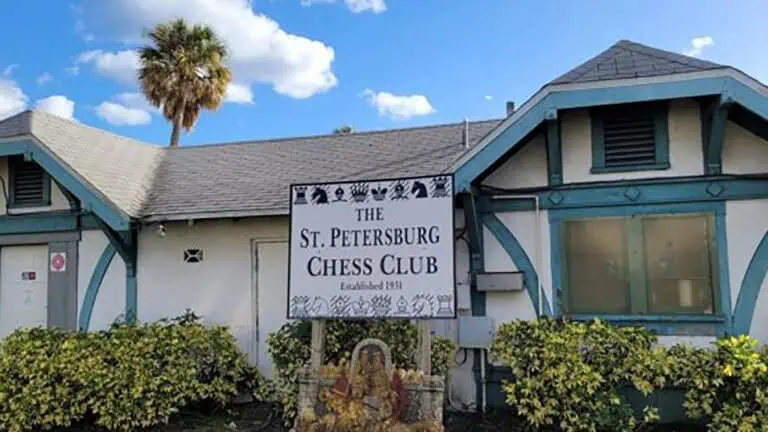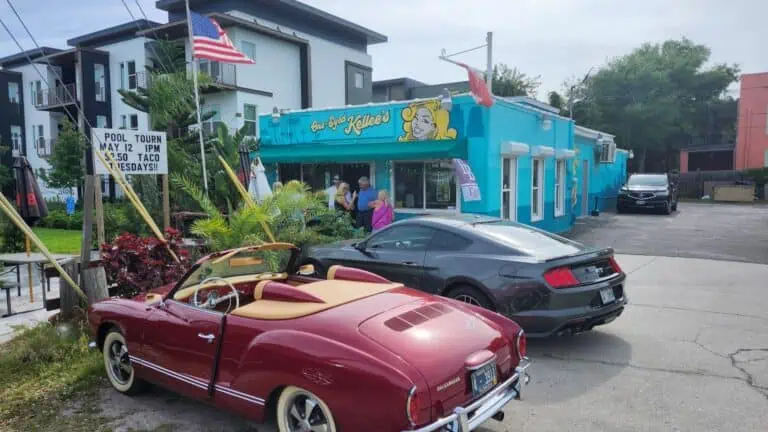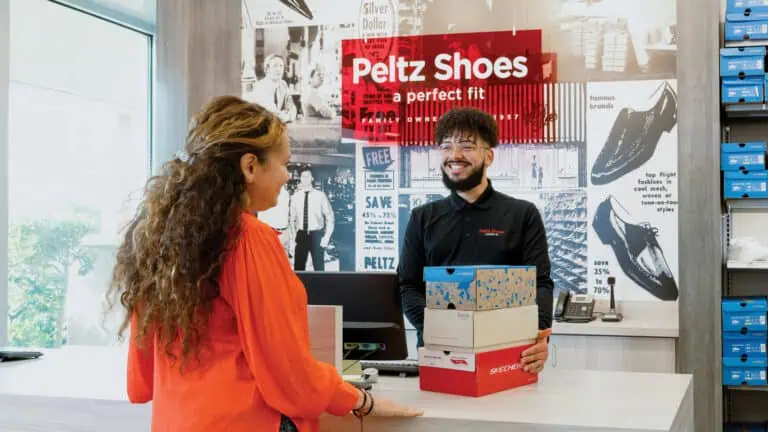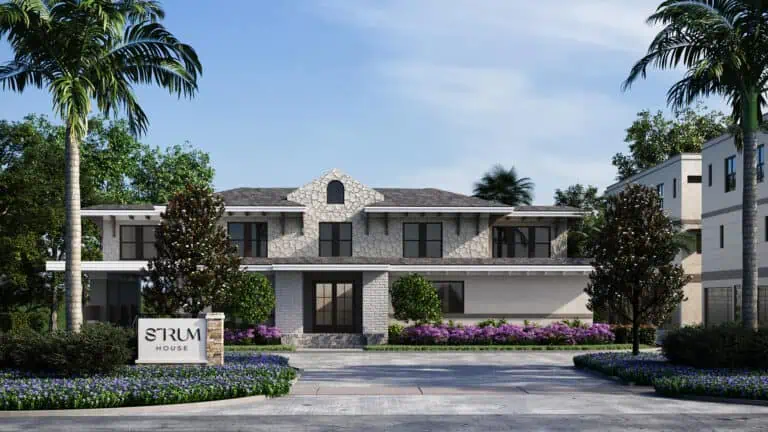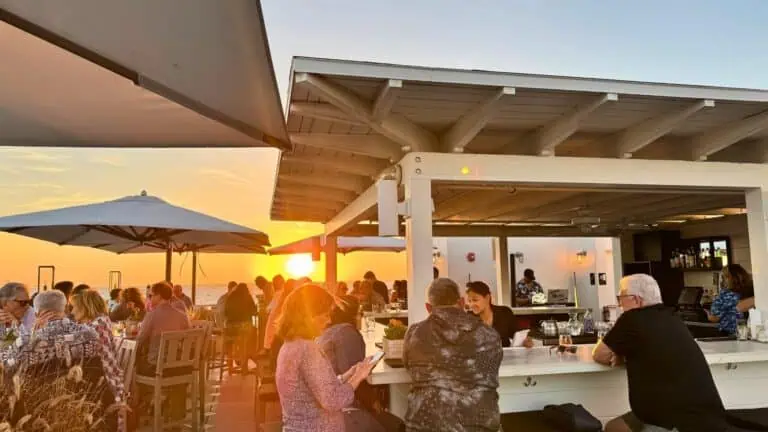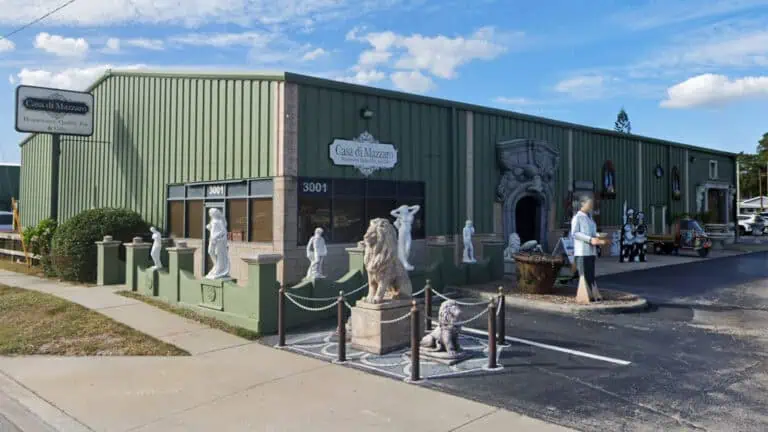Mayor Ken Welch recently announced that the city was seeking a $1.2 million federal grant to study the possibility of converting eighth Street and Martin Luther King, Jr. Street back to two-way traffic. It begs the question: why were they made one-way to begin with?
NEW HISTORY TOUR: Want to learn more? Join Monica Kile for a special one-off history walking tour “Before the Interstate: Round Lake and Mirror Lake” on December 10. Only 25 tickets. Get yours here.
The answer can be found in the massive population explosion in St. Petersburg during the post-World War II economic boom. Some 47,000 houses were built in St. Pete during the decade of the 1950s and the city’s population increased by 87 percent in that same period. Suddenly thousands of people worked downtown but lived some distance away in newly built suburbs. Those workers wanted out of downtown as quickly as possible after work to shorten their commute. Downtown businesses, meanwhile, hoped that making it easier to get into downtown might bring back some of the customers they were losing to suburban shopping centers like the sprawling Central Plaza, built in 1952.
ADVERTISEMENT
One way streets were meant for commutes, not business
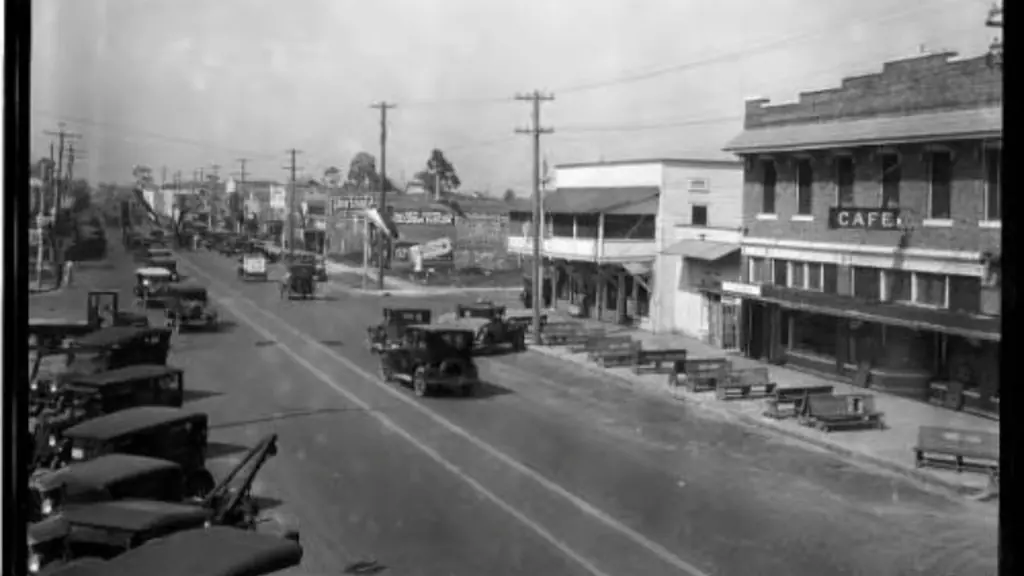
One-way streets, which were being implemented throughout the United States to speed traffic flow in an increasingly car-dependent country, seemed like the perfect solution. Typically matched in coupled pairs, one-way streets were known to reduce traffic friction, thereby creating higher speeds. When complemented by synchronized stoplights, the difference in speeds on a one-way street versus a two-way street is significant.
Discussion of a one-way street pattern began in St. Petersburg as early as 1947, but implementation didn’t begin until the early 1960s when Second, Third, Fourth, and Fifth Avenues North were made into one-way streets. The removal of the downtown railroad tracks and passenger station in 1963 led to the conversion of First Avenues North and South to one-way traffic the following year. In 1972, Third and Fourth Streets, the north/south arteries into and out of downtown, followed suit.
The construction of Interstate I-275 through Pinellas County in the late 1970s created another rationale for one-way streets. City leaders argued Eighth Street and Ninth Street (MLK) must be widened and converted to one-way to feed the interstate’s downtown entry and exit spurs of I-175 and I-375. But to do so meant altering the pattern of Eighth and Ninth Streets through the historic neighborhoods of Roser Park and Campbell Park. The construction of what became known as the Eighth Street Connector that directs traffic from MLK to one-way Eighth Street heading north required the demolition of many historic homes in Roser Park, and put an uninviting underpass between homes that once were neighbors (inadvertently spurring a nascent historic preservation movement in the city and leading, in part, to the designation of Roser Park as the city’s first local historic district.)
ADVERTISEMENT
The interstate spurs of I-175 and I-375 further altered Fourth and Fifth Avenues North and South, creating huge concrete barriers and inhospitable “surface freeways” between once-porous and symbiotic neighborhoods like Round Lake and Mirror Lake, and the Gas Plant and Campbell Park.
One way streets can bring negative results alongside the positives
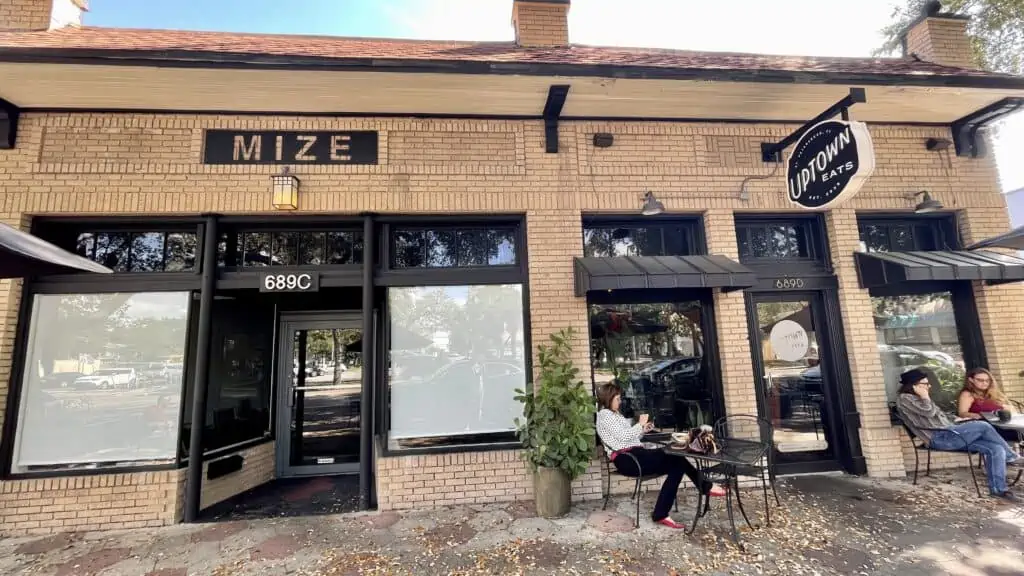
The consequences of these major road changes, while not immediately clear, were not what city leaders hoped for. Decades later urban planners have realized that one-way streets can be disastrous for businesses, pedestrians, and even the trees that line their edges. The high speeds on one-way streets intimidate pedestrians, who tend to avoid them. Altered traffic patterns also affect commuter shopping habit. Shoppers don’t notice or patronize businesses along one-way streets because they are moving too quickly, or the business is located in a spot that is now inconvenient to visit because of the one-way restrictions. As an example: people tend to run errands on the way home from work, rather than on the way to work, so businesses (like dry cleaners, for instance) located on the one-way feeders into downtown, tend to suffer.
In St. Petersburg, as business dried up on the one-way streets, empty buildings were knocked down for surface parking in the hopes that increased spaces for cars would encourage lost customers to return. (Just look at the number of surface parking lots along First Avenue North between Third Street and Eighth Street, as an example of this phenomenon.) This had the opposite result, actually hastening the deterioration of downtown, as surface parking lots are known to do.
While some of the negative aspects of one-way streets can be chalked up to unintended consequences, racial politics also played heavily into who benefited and who suffered from decisions about the streets and the interstate. Construction of I-275 displaced thousands of African-American families in St. Petersburg as the highway was routed directly through the city’s historically African-American neighborhoods of the Gas Plant and the Deuces, along 22nd Street South. The disruption and destruction caused by the interstate made it easier to label the Gas Plant area as blighted, paving the way for later redevelopment. (Today, one can gain a good visual perspective of the disconnection of Campbell Park and the former Gas Plant neighborhood by walking over the pedestrian overpass connecting Campbell Park to Tropicana Field, and viewing the massive barrier presented by the interstate.)
Welch encourages a fresh look at city streets
Mayor Welch’s initiative to convert Eighth Street and MLK, Jr. Street back to two-way is not the first time the city has explored undoing part of the city’s one-way grid. A five-block section of MLK from Fourth Avenue North to Ninth Avenue North was returned to two-way in 2005 after local businesses successfully lobbied for the change. Today, this stretch is home to many popular establishments, including Gypsy Souls coffee shop, Nova 535 event space, Uptown Eats, Barkett Realty, and other local shops. In 2006 both First and Second Streets, from fifth Avenue North to USFSP, were changed from one-way to two-way in 2006, helping to reduce speeds in an increasingly pedestrian-oriented downtown.
City leaders hope that returning Eighth and MLK to two-way traffic will reinvigorate businesses in once-thriving locations, reconnect severed communities, and perhaps rectify past injustices. Whether it will lead to the eventual conversion of all one-way streets back to two-way, or the removal of one or both of the interstate spurs (a proposition sure to spark vigorous opposition because of I-175’s proximity to two hospitals) remains to be seen.
ADVERTISEMENT


